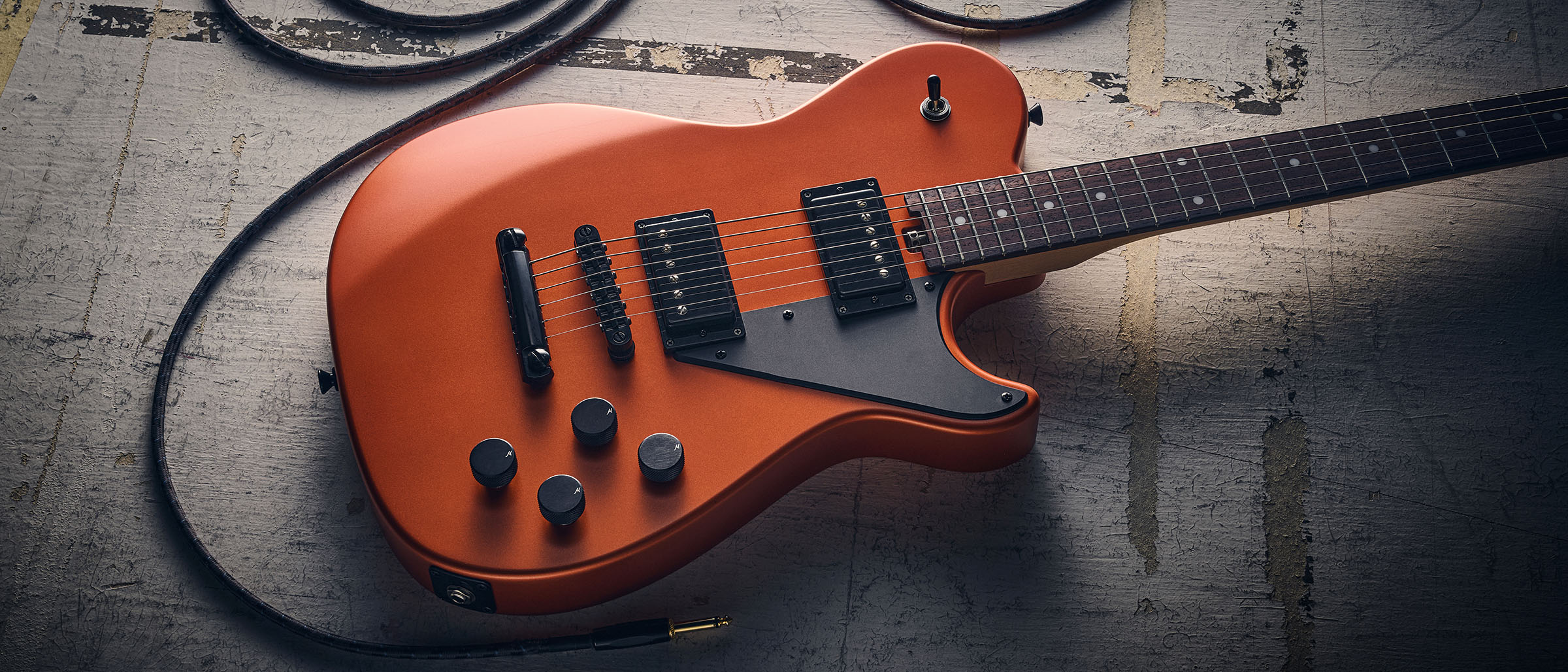Guitar World Verdict
The pull-switch parallel voices provide single-coil-like contrast but remain humbucking, another important bit of insurance for the gigging musician. And, as ever for a Manson build, there’s not a hair out of place: it’s unfussy and very fit-for-purpose guitar making. A faultless, well-tuned and well-voiced working guitar.
Pros
- +
Detailed unfussy build.
- +
Excellent weight.
- +
Big rock series voicing with parallel mode contrast.
- +
New heel design with proper neck bolts.
Cons
- -
Some might prefer a bridge pickup with a little less heat, but then it wouldn’t be the Mikey Demus signature model!
You can trust Guitar World
What is it?
Think of Manson guitars and you’ll probably visualise a complex, slightly bonkers music-making machine as wielded by Matt Bellamy (a majority shareholder in the company). But last year we took a look at the complete opposite: the single-pickup Verona and MA Juniors, which were about as simple as it gets but glorious rock ’n’ roll pieces nonetheless.
Another plus for those Junior models was that they were entirely made in the UK, including the in-house Manson Dirty Rascal humbucker, listed at £1,399. To be honest, we couldn’t wait for a two-pickup ‘Special’, and that’s not far from what we have here wrapped up as a signature model for long-time Manson flag-waver Mikey Demus.
One significant difference is that, while Mikey’s previous signature guitars – the MD-1 and MD-2 from 2018 – were made in the Czech Republic and assembled at Manson Guitar Works’ Devon-based HQ, the MD-3 is thoroughly crafted in the UK.
Manson’s MA outline is the company’s take on the Telecaster and it’s less radical-looking compared with the MB shape with its pulled-out upper horn. The body here is two-piece obeche, chosen to keep the weight in check, and it’s completely hidden under the Atomic Orange satin finish, one of two colour schemes in which the new guitar is offered.
There are no modernist body contours here, just the standard forearm slope and ribcage cutaway, both very well shaped, while the new ‘all access’ heel has a nicely rounded nose on the treble side with a sloping chamfer that reduces a little bulk.
Another change here is that the neck is joined to the body with proper Allen-key bolts (not screws) that are recessed into the body and thread into insets in the neck itself. The rift-sawn neck wood has a slightly dark ‘dirty maple’ colouration and is a roasted maple, the rosewood ’board a classic deep brown with simple and utilitarian off-white dots.
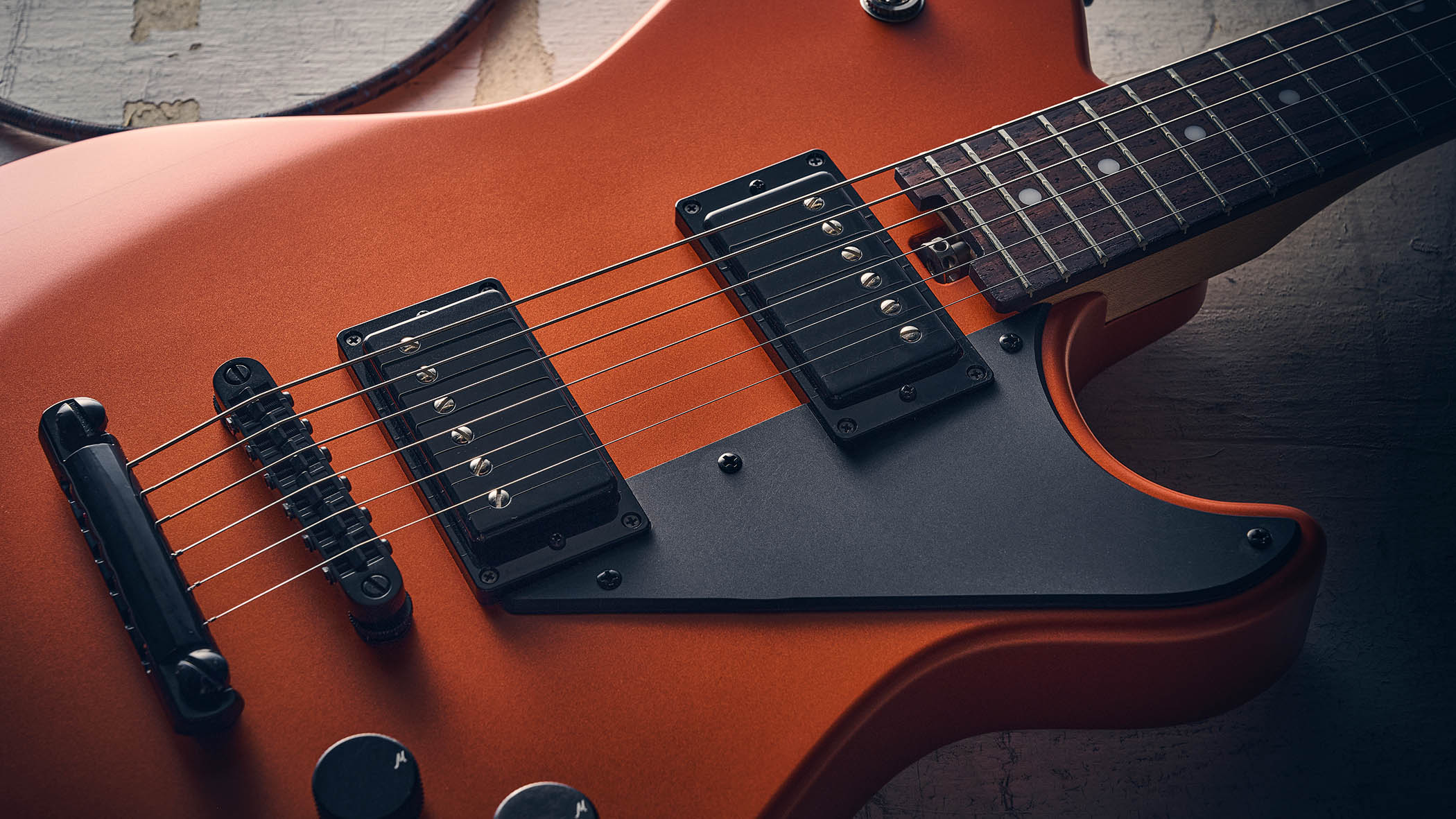
Those neck bolts are one of the many changes to the original MD guitars, which both featured a Tele-style bridge plate with a dual-rail single-coil-sized humbucker, plus a standard-sized humbucker in neck position. Here, the MD-3 swaps to a classic tune-o-matic-style bridge and stud tailpiece, and the pickups are both full-size humbuckers.
All the latest guitar news, interviews, lessons, reviews, deals and more, direct to your inbox!
Like the earlier models, they’re controlled with a shoulder-placed three-way toggle pickup selector switch and individual volume and tone controls for each pickup, here with proprietary knurled-edge aluminium control knobs. The tone controls have a pull-switch function, too, which voices each humbucker in parallel and (unlike a coil‑split) remains hum-cancelling.
As you can see, all the hardware and pickup covers are black plated, including the rugged metal output jack plate, while the inverted pickguard is black plastic that’s bead-blasted by Manson to give it a lightly textured matt finish – as are the recessed rear-cavity covers. It’s a Manson and details are all-important.
Specs
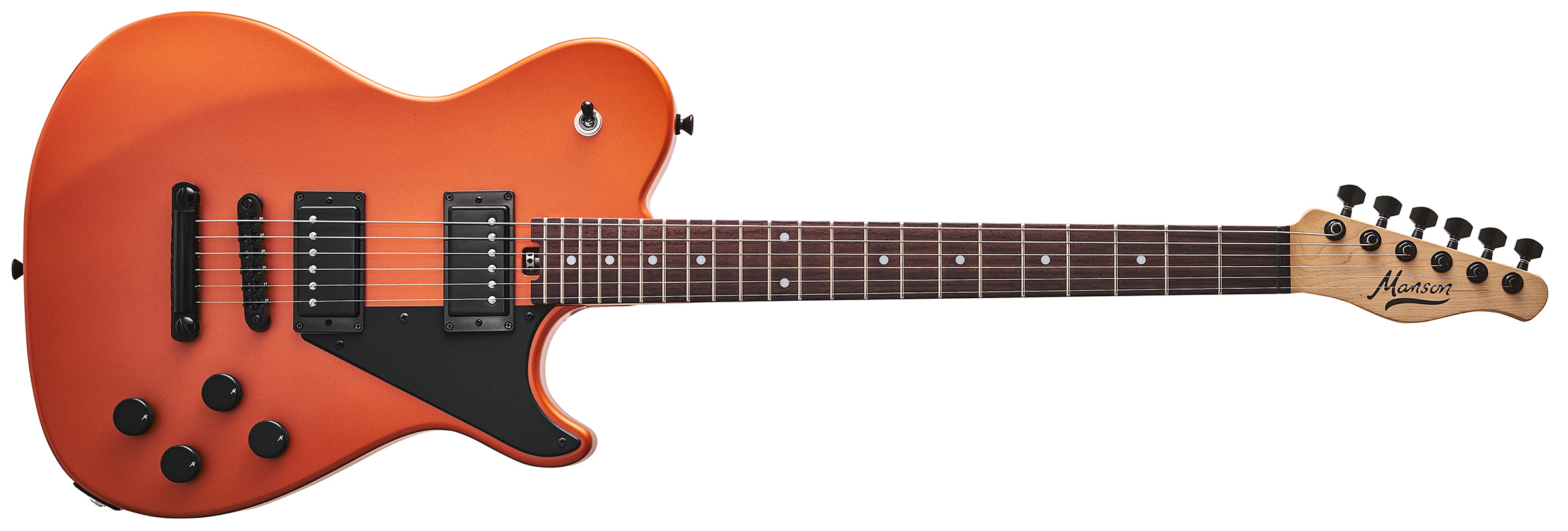
- PRICE: £2,099 (approx, $2,800, inc case)
- ORIGIN: UK
- TYPE: Single-cut solidbody electric
- BODY: 2-piece obeche
- NECK: Roasted maple, bolt-on
- SCALE LENGTH: 648mm (25.5”)
- NUT/WIDTH: Graphite/43.65mm
- FINGERBOARD: Rosewood, white dots, 305mm (12”) radius
- FRETS: 22, medium jumbo
- HARDWARE: Gotoh tune-o-matic style bridge and stud tailpiece, Gotoh SG 381 HAP tuners
- STRING SPACING, BRIDGE: 51.5mm
- ELECTRICS: 2x Manson Benchmark+ black-plated covered humbuckers, 3-way toggle pickup selector switch, individual pickup volume and tone controls (w/ pull switch parallel option)
- WEIGHT (kg/lb): 3.09/6.8
- LEFT-HANDERS: Yes, no extra cost
- FINISHES: Atomic Orange (black hardware and scratchplate, as reviewed), Dry Satin Black (Wildcat Orange scratchplate, nickel-plated bridge and tailpiece and black-plated tuners) – matt polyurethane to body and neck
- CONTACT: Manson Guitar Works
Playability and sounds
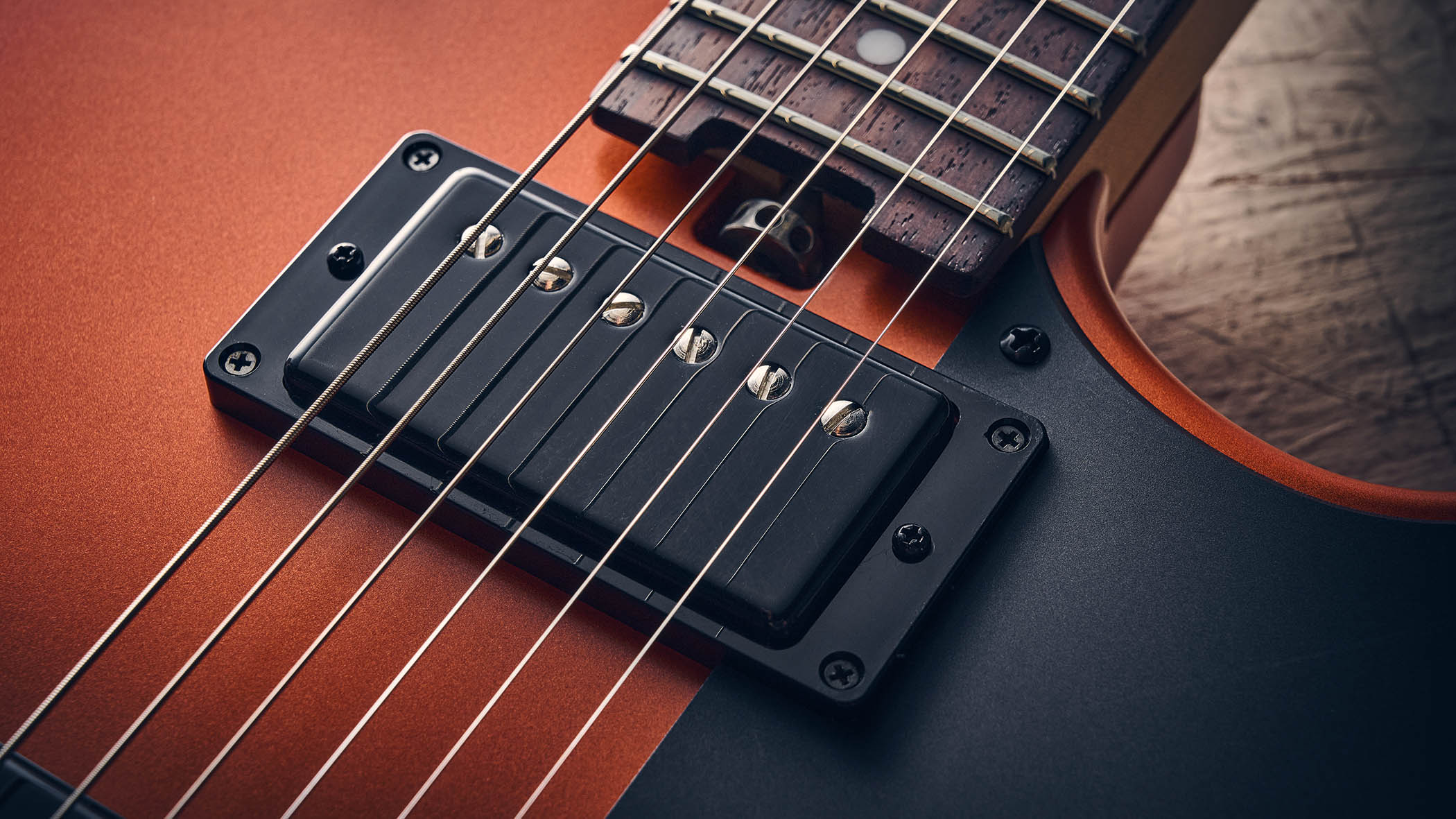
Of course, there’s considerable familiarity here. The weight is good for the style, neither feather-light nor over heavy, and as you’d expect with its signature artist aim, it’s totally gig- and tour-ready: tune it up and off you go.
While the spoke-wheel truss rod adjuster means any necessary neck adjustments are swift to execute, we didn’t need to touch it, despite our play time coinciding with the June heatwave in the UK.
The setup is mainstream, the 0.010s providing a little fight in combination with the longer Fender scale length, and the medium jumbo gauge frets (measuring 2.58mm wide with a good height of just over 1.2mm) are immaculately installed on the 305mm (12-inch) radius ’board.

Dimensionally, the neck is very close to those previous MD models: 22mm deep at the 1st fret, 24mm by the 12th, with a width at the nut of 43.65mm and 51.75mm at the 12th. It has a very light matt sheen that virtually feels like raw wood, with a quite full-shouldered ‘C’ profile that feels comfortably full without it being excessive in the least.
There’s zero neck flex, intonation is bang on and tuning stability is first class, no doubt helped by the perfectly cut friction-reducing nut and straight string-pull to the Gotoh tuners with their height-adjustable posts (HAP) that make string trees unnecessary. Perfect craft.
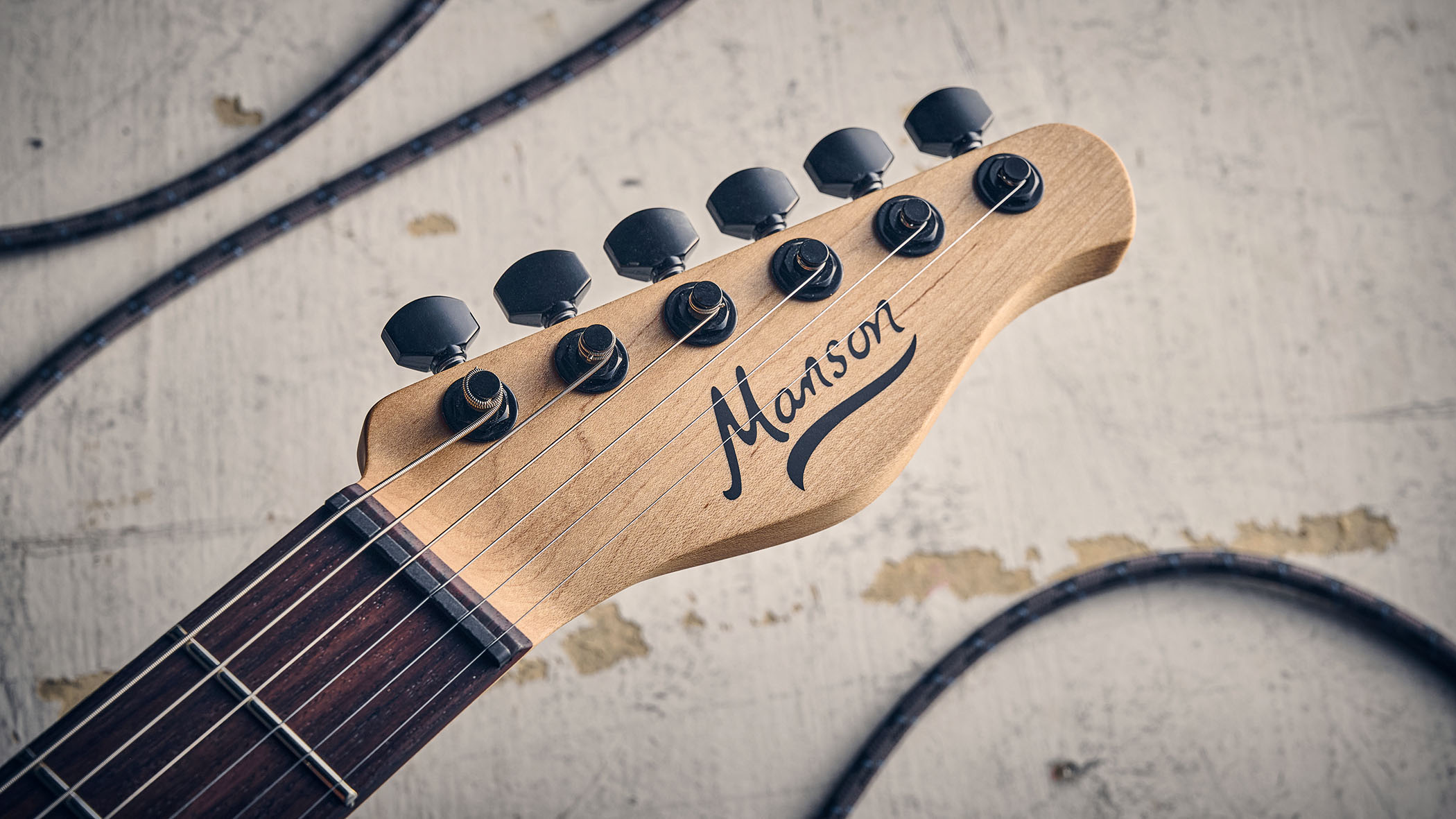
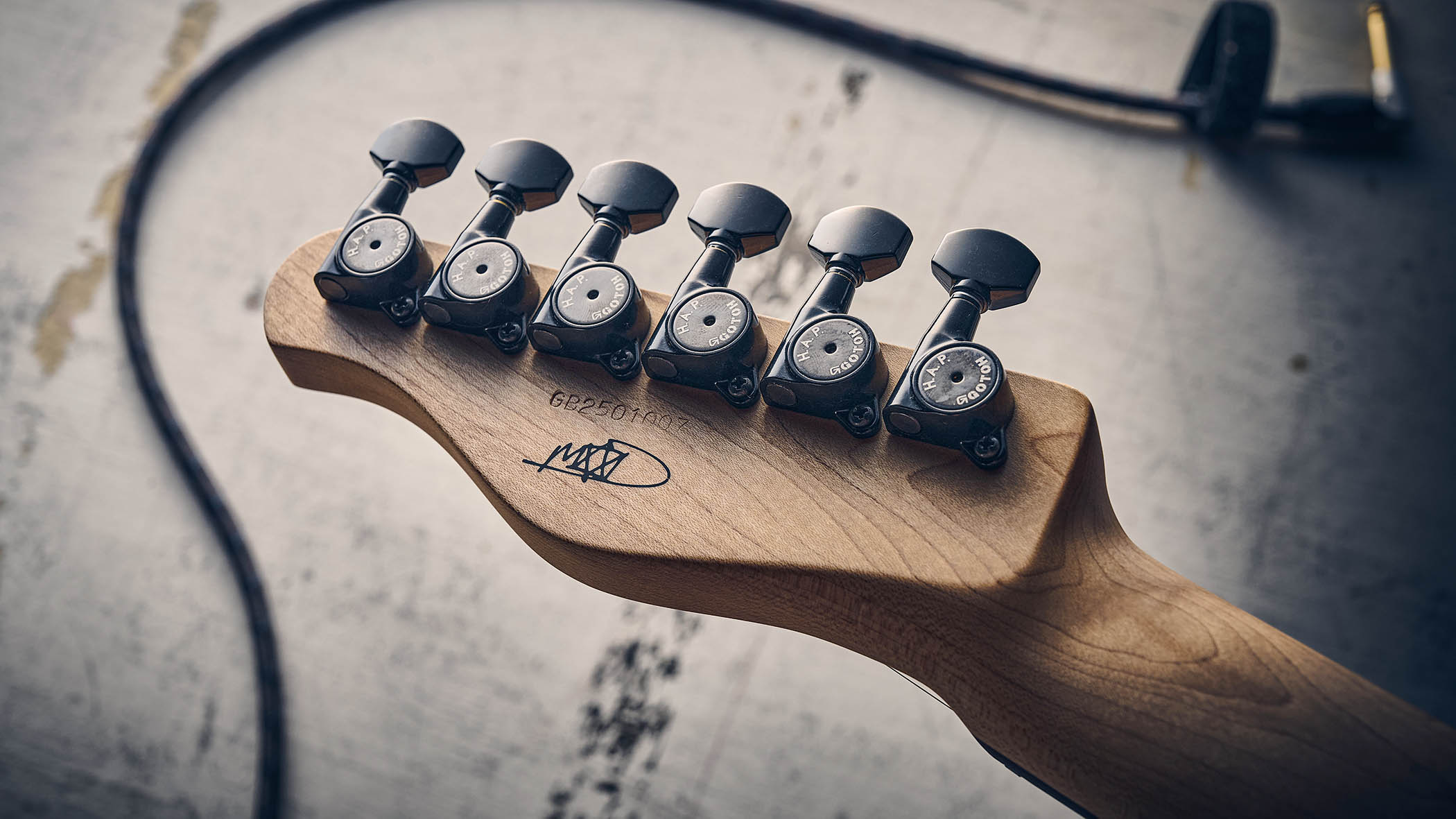
Okay, twin-humbucker four-control T-styles aren’t unique, but the combination of the longer Fender scale with that classic Gibson-style bridge setup certainly influences what we hear, and unplugged there’s a smooth attack to the big ring. In that regard, again, it’s classic Manson.
There’s jangle aplenty here, too, or some well-voiced funk, before you slam back into series mode and pile on the rock
We carried out our first sound tests without any information on the moody-looking humbuckers, but we’re met with a big ‘overwound’ voice at the bridge contrasted by the flutier and beautifully vocal neck humbucker.
The look of the guitar nods to the Telecaster and yet what we’re hearing is way more ‘Les Paul’ with a big thickness at the bridge that recalls a late ’70s popular pickup mod – maybe the bridge humbucker here should have double cream bobbins?
It seems a perfect fit for a gained amp and/or your favourite dirt pedals, and if that’s where you live, this MD-3 has your name on it. We spent far too long with a smile on our face reliving our rockier days!
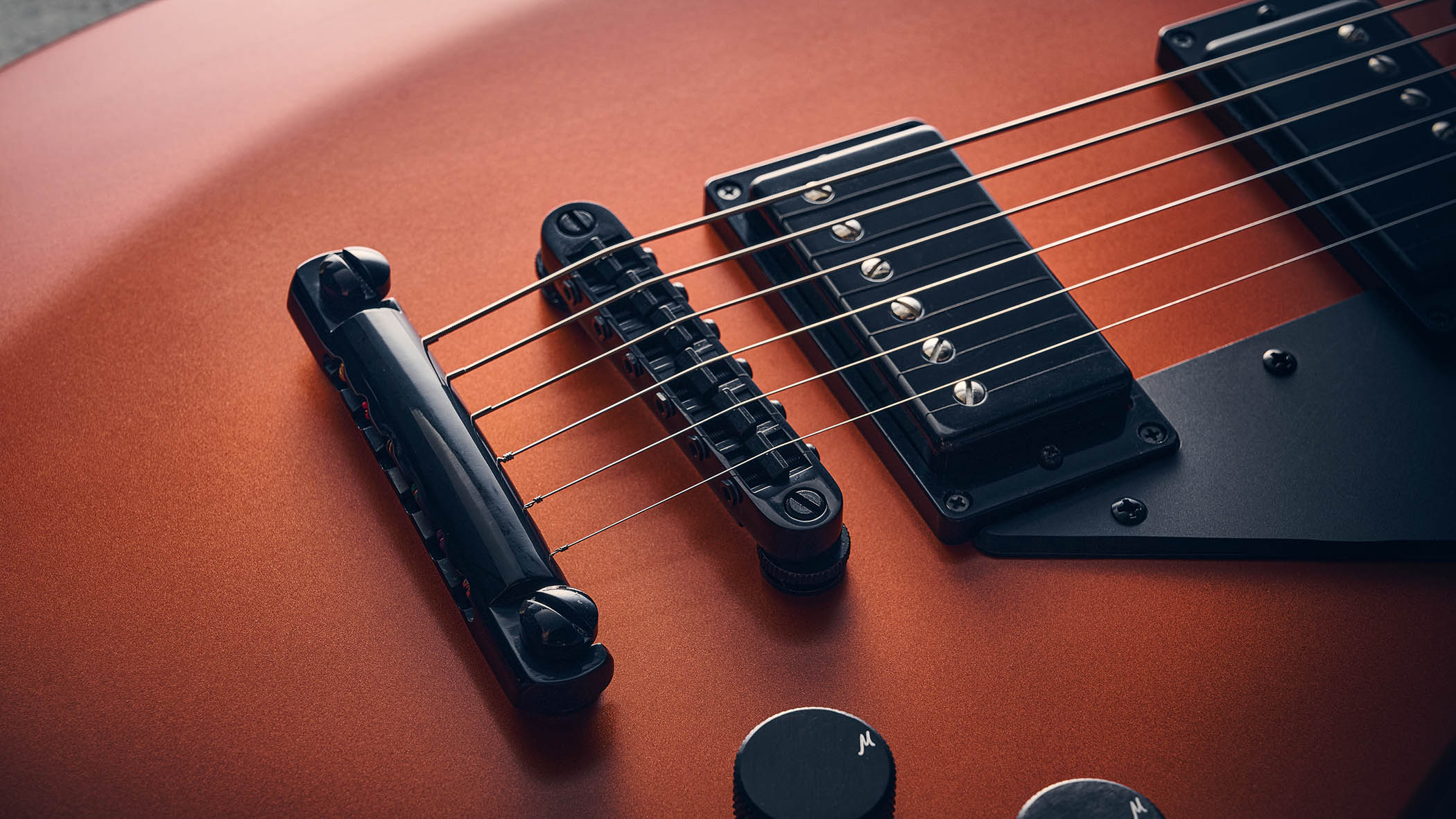
It’ll be a little too pushy at the bridge if you’re chasing a more classic ’Burst-era voice, and on cleaner amp voicings with a little hair we might suggest a treble bleed on both those volumes to maximise the clarity when you turn down.
But pull up those tone controls to voice the parallel modes and it’s almost like a completely different guitar: cleaner, snappier and more single-coil-like but still humbucking, so there’s no noise even with those heavier gains but a lot more clarity.
There’s jangle aplenty here, too, or some well-voiced funk, before you slam back into series mode and pile on the rock. With both pickups on, you can mix the series/parallel modes to good effect: plenty of girth with a little more edge. All in, it’s an easy drive and quite a ride, too!
Verdict
Verdict: ★★★★★
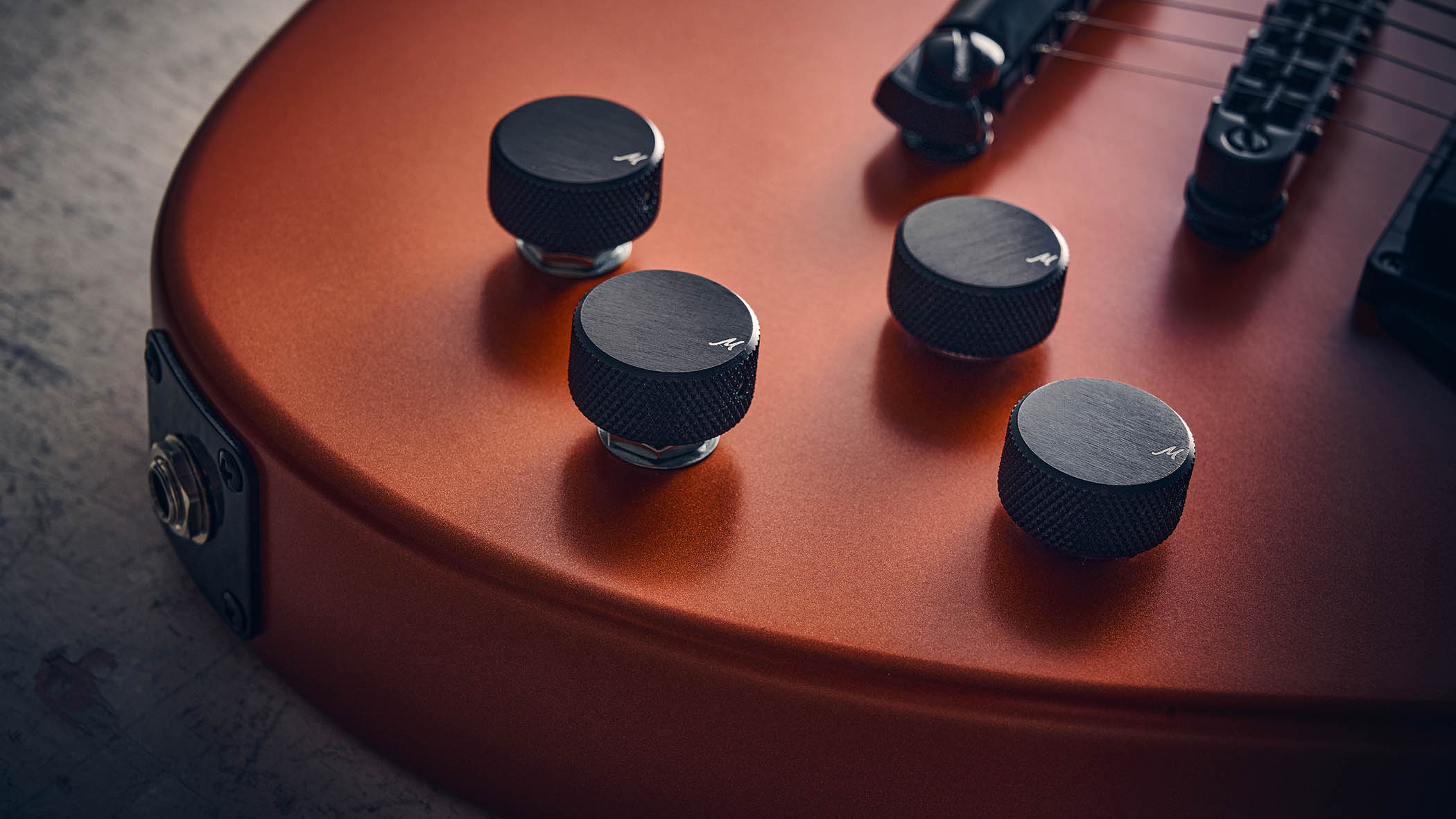
While plenty of signature guitars employ numerous twists to control circuits, not to mention unique colours or artist-themed inlays, the MD-3 is almost an anti-signature.
Aside from Mikey Demus’s small signature squiggle on the headstock back, there’s nothing to give the game away
Aside from Mikey Demus’s small signature squiggle on the headstock back, there’s nothing to give the game away. The black hardware nods to harder rock style, which is easily handled, but the MD-3 is capable of a much more nuanced, broad voice.
The pull-switch parallel voices provide single-coil-like contrast but remain humbucking, another important bit of insurance for the gigging musician.
Guitar World verdict: As ever for a Manson build, there’s not a hair out of place: it’s unfussy and very fit-for-purpose guitar making. A faultless, well-tuned and well-voiced working guitar.
Hands-on videos
Manson Guitar Works
- "A modern rock machine providing up-to-date tones and plenty of fun features at a reasonable price": Manson Meta MBM-2H Sustainiac review
- This article first appeared in Guitarist. Subscribe and save.

Dave Burrluck is one of the world’s most experienced guitar journalists, who started writing back in the '80s for International Musician and Recording World, co-founded The Guitar Magazine and has been the Gear Reviews Editor of Guitarist magazine for the past two decades. Along the way, Dave has been the sole author of The PRS Guitar Book and The Player's Guide to Guitar Maintenance as well as contributing to numerous other books on the electric guitar. Dave is an active gigging and recording musician and still finds time to make, repair and mod guitars, not least for Guitarist’s The Mod Squad.
You must confirm your public display name before commenting
Please logout and then login again, you will then be prompted to enter your display name.
